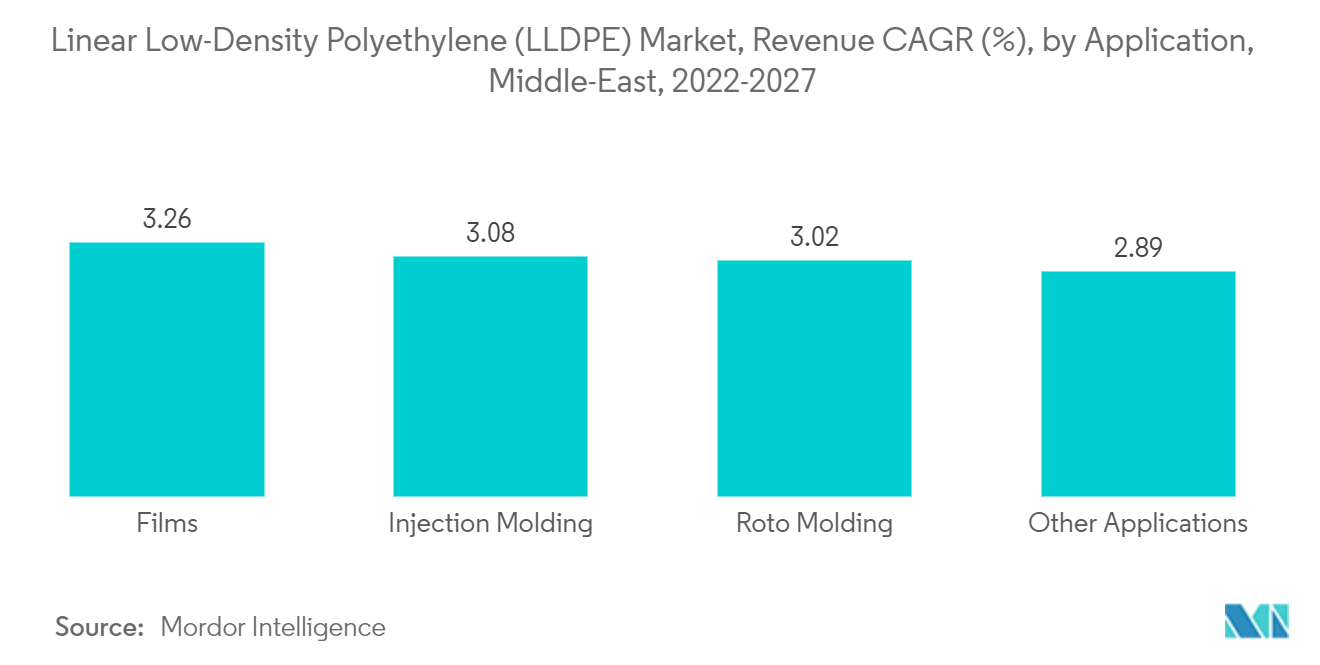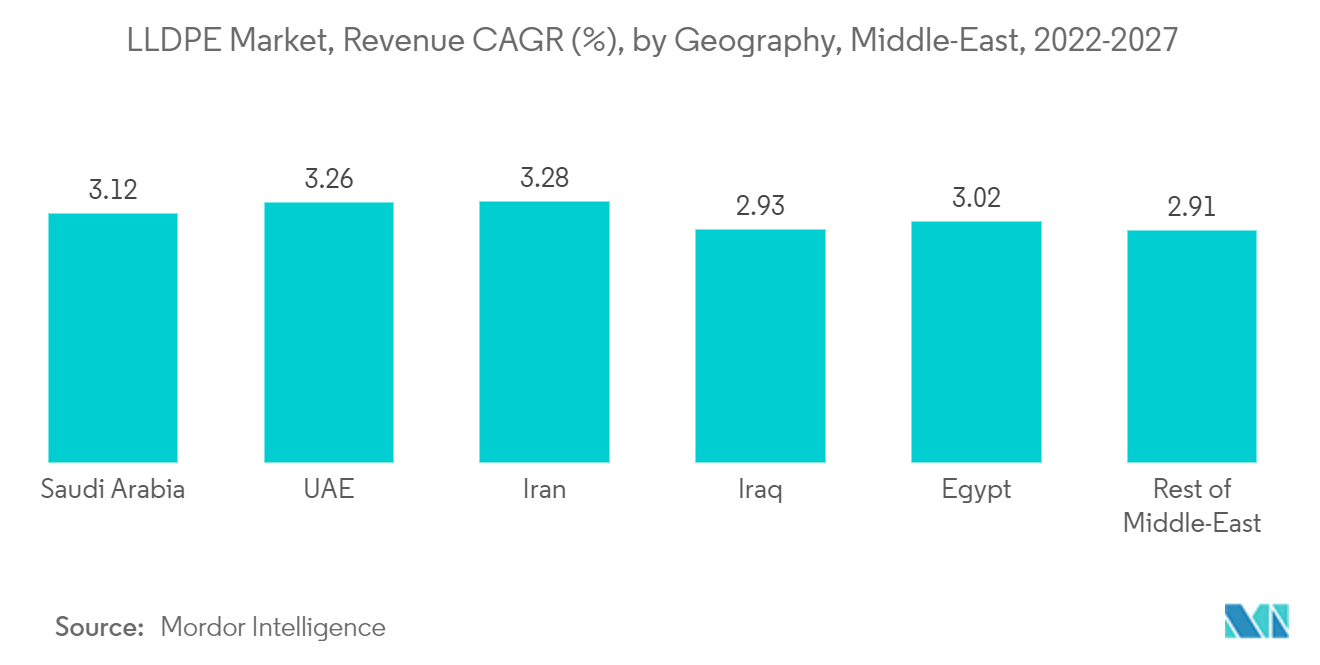Market Trends of Middle East LLDPE Industry
Growing Demand for Packaged Foods
- The hectic lifestyle of people and the rise in preference for convenience have augmented the packaged food demand in the region. The rapidly growing population favors the consumption of packaged foods and beverages, thus boosting the market growth.
- According to the Interpack, 5% of the world's consumption of packaged goods is consumed in the Middle East. Over the next four years, the packaged food demand will increase by 21% and is likely to be over 44 million tons.
- Rising innovations in different food packaging, healthy ingredients, and the usage of plant-based products have contributed to market growth in the next five years.
- In addition, the rising demand for plant-based products owing to the growing vegan population in the region has amplified industry players to create lucrative opportunities.

Iran Showing Immense Potential with Production Expansion Through New Projects
- According to the National Petrochemical Company (NPC) media release, the current production capacity of polymers is 9 million tons per year which is planned to reach 20 million tons per year by 2025. This will be achieved through three different mega-projects planned across Iran. So, companies are expanding their production capacity to increase their product portfolio.
- In January 2021, Hormoz Persian Gulf Petrochemical Company would be developing a plant with an annual capacity of 5.8 million tons against an investment of about USD 4.5 billion. The feedstock to the plant will be butane and ethane with polyethylene and polypropylene being the two major products.
- Another project would be Vista Energy Arghavan, located in Assaluyeh, costing USD 1.6 billion in investment, with an annual production capacity of 1.8 million tons. The feedstock would be ethane and butane.
- The third project will be an aromatic olefin project by Aria Oil and Gas Company, which is a subsidiary of the Persian Gulf Petrochemical Industries Company (PGPIC). The feedstock would be naphtha and ethane and the plant is expected to have an annual production capacity of 4.8 million tons. The project would reportedly be built on an investment of USD 4.8 Billion.
- These projects were aimed at completing the value chain and diversity aspect of the petrochemical portfolio and would boost the overall market in the Middle-East region.



